By Christopher Miskimon
It was early in the morning of June 14, 1940, when the Third Reich arrived in Paris. The defeat of France was nearly complete, with French and British forces in retreat. Paris had been declared an open city to spare it the destruction being visited upon the rest of the country. The entire nation was in a state of shock at the rapid German advance. The Axis soldiers moving into the city passed walls festooned with propaganda posters extolling the superiority of French arms. Quickly the Germans moved to set up a headquarters at the Hotel de Crillon and sent troops to the Eiffel Tower and the Arc de Triomphe.
By afternoon swastika flags were flying above many of the city’s landmarks. A rain began to fall, drenching happy Germans and nervous Parisians alike. That evening, trucks with loudspeakers roamed the streets warning the citizenry to gather what supplies they would need, return to their homes, and stay there. The main German army would arrive within 48 hours. The broadcasted message ended ominously with a warning that no demonstrations would be permitted.
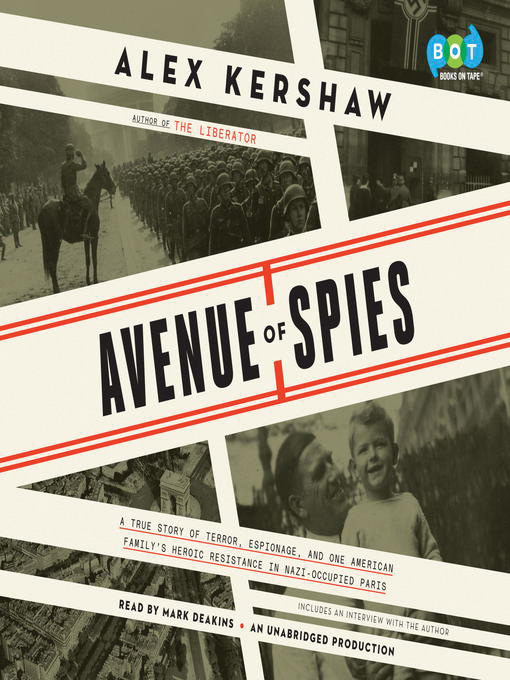 One of the streets the trucks drove down was the Avenue Foch, which branched to the west from the Arc de Triomphe. On the Avenue Foch stood the home of Doctor Sumner Jackson, an American citizen, and his Swiss-born wife Toquette. Jackson worked at the American Hospital in Paris. He had moved to France years earlier so Toquette could be closer to her family. They had a son, 12-year-old Phillip. Now they had to face the reality of Nazi occupation amid the defeat of their adopted home. America and Germany were not yet at war, so Sumner and his family were relatively safe, at least for the moment. However, this sad day in June 1940 was only the beginning of their ordeal, which is told in Alex Kershaw’s newest book Avenue of Spies: A True Story of Terror, Espionage, and One American Family’s Heroic Resistance in Nazi-Occupied Paris (Crown Publishers, New York, 2015, 304pp, maps, photographs, notes, bibliography, index, $28.00, hardcover).
One of the streets the trucks drove down was the Avenue Foch, which branched to the west from the Arc de Triomphe. On the Avenue Foch stood the home of Doctor Sumner Jackson, an American citizen, and his Swiss-born wife Toquette. Jackson worked at the American Hospital in Paris. He had moved to France years earlier so Toquette could be closer to her family. They had a son, 12-year-old Phillip. Now they had to face the reality of Nazi occupation amid the defeat of their adopted home. America and Germany were not yet at war, so Sumner and his family were relatively safe, at least for the moment. However, this sad day in June 1940 was only the beginning of their ordeal, which is told in Alex Kershaw’s newest book Avenue of Spies: A True Story of Terror, Espionage, and One American Family’s Heroic Resistance in Nazi-Occupied Paris (Crown Publishers, New York, 2015, 304pp, maps, photographs, notes, bibliography, index, $28.00, hardcover).
Before the war Sumner Jackson had worked hard to serve his adopted nation, and now that it was in its darkest hour he did not fail to render all the aid he could. He continued his work at the hospital, which allowed him to help wounded Allied soldiers sent to the American Hospital for treatment. After helping with their recovery, Sumner would obtain forged documentation and help them get out of Paris and eventually France altogether. A scare came in 1942 when he was arrested one day by the French police. He soon found out all Americans were being interned; the Germans had not caught on to his scheme to help others escape. Friends quickly intervened and secured his release.
While Sumner was aiding Allied soldiers, Toquette was at home on Avenue Foch fighting the Nazis in her own way. She allowed members of the French Resistance to use the residence as a clandestine meeting place. They also used the home as a “drop,” a place to leave important messages for various members of their movement. In this way the family helped the Allied cause for years; on June 6, 1944, when the Canadian Army came ashore at Juno Beach, they were crossing sands where young Phillip had played as a child.
By that point, however, time had run out for the Jackson family. On May 25, 1944, the Nazis arrived at their home; they had been found out. All three were arrested by the French milice, the German-controlled police force. The day after D-Day, they were handed over to the Gestapo. Soon all three were sent to concentration camps, Sumner and Phillip together while Toquette was alone. One of them would not survive the war.
The author is well known for his skill at storytelling, and he does not disappoint here. When it comes to such tales, one cannot fabricate stories that exceed the drama of actual events. As such, this book reads almost like a novel, keeping the reader interested in turning the page to see what comes next. Kershaw’s writing relays all the tension, emotion, and fear the Jackson family went through in clear, engaging prose. This new work tells a little-known story of the French Resistance along with the risks they took and the terrible price some paid.
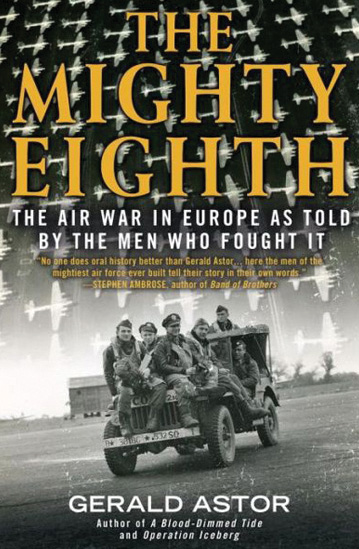 The Mighty Eighth: The Air War in Europe as Told by the Men Who Fought It (Gerald Astor, Berkley Caliber, New York, 2015, 493pp, bibliography, index, $17.00, softcover)
The Mighty Eighth: The Air War in Europe as Told by the Men Who Fought It (Gerald Astor, Berkley Caliber, New York, 2015, 493pp, bibliography, index, $17.00, softcover)
The Eighth Air Force suffered a higher casualty rate than the Marine Corps did in the Pacific. These aviators took the war to Germany under harrowing conditions against stiff resistance, fighting their way through enemy fighters and antiaircraft fire to deliver their payloads of destruction. While ground troops might complain of the flyers’ ability to sleep in a warm bed in England between missions, the risks they took meant they could expect to die if their planes went down; few wounded made it back to base. This paperback edition of the original book by the late acclaimed historian Gerald Astor brings the air war to the reader through the first-person accounts of the men who took part in it, risking everything to take the war to the skies over Nazi Germany.
Freemantle’s Submarines: How Allied Submarines and Western Australians Helped to Win the War in the Pacific (Michael Sturma, Naval Institute Press, Annapolis, MD, 2015, 248pp, map, photographs, notes bibliography, index, $32.95, hardcover)
In early 1942, the Allies were retreating in the Pacific. In March, American and Dutch submariners fell back to Australia, occupying a small naval base on the country’s west coast at Freemantle. They had been pushed out of the Philippines and the Dutch East Indies, and Freemantle was the only place they could reasonably base while staying out of range of Japanese land-based aircraft. It was a difficult location to supply, but it had a good harbor. The sailors were welcomed by the local Australians, which helped immensely. Soon they began to take the war back to the Japanese.
The story of the Freemantle submarine base is both a military and social history. The Australian families of Fremantle took in the Allied sailors and watched them go out time and again on patrols. This close relationship was valued by the sailors and became almost legendary. This book tells one of those small stories of the war in an interesting way.
 The Rise of Germany 1939-1941: The War in the West, Volume 1 (James Holland, Grove Atlantic, New York, 2015, 649pp, photographs, notes, bibliography, index, $30.00, hardcover)
The Rise of Germany 1939-1941: The War in the West, Volume 1 (James Holland, Grove Atlantic, New York, 2015, 649pp, photographs, notes, bibliography, index, $30.00, hardcover)
Siegfried Knappe, a young German artillery lieutenant, was a bit disappointed in how World War II began for him. His regiment had gone off to invade Poland, but 20 percent of it—Knappe included—had been left behind to form the nucleus of a new regiment. Thus the army would expand to meet the challenges of war with not only Poland but France and England as well. Soon after, new recruits arrived, including a new commander, a 40-year-old reservist. Within days this untrained, untested regiment was moved west to the Luxembourg border, there to await attack by the French. This assault did not come, and presently Knappe and his men began to think the war would quickly be over. They had no idea what was in store for them.
The conventional view of the war at this point is of a superior German military sweeping all before it without even breaking a collective sweat in the effort. The author tells a new story, revealing how difficult it was for all sides. No one was fully ready for war—Knappe’s artillery was horse-drawn—but Hitler took a chance and war came anyway. The Nazi leader’s gambling early in the war paid off, but those initial victories created a false sense of superiority that hid serious shortcomings in Germany’s war-making capability. This book includes new archival material and numerous firsthand accounts woven into a compelling narrative about the early years of the war.
 U.S. Navy Codebreakers, Linguists, and Intelligence Officers Against Japan, 1910-1941: A Biographical Dictionary (Steven E. Maffeo, Rowman and Littlefield Publishers, Lanham, MD, 2015, 610pp, photographs, notes, bibliography, index, $120, hardcover)
U.S. Navy Codebreakers, Linguists, and Intelligence Officers Against Japan, 1910-1941: A Biographical Dictionary (Steven E. Maffeo, Rowman and Littlefield Publishers, Lanham, MD, 2015, 610pp, photographs, notes, bibliography, index, $120, hardcover)
In the early 20th century, Japan was on its way up in the world. Less than a century before, it had been in a feudal state. Now, however, it was reinventing itself into a modern industrial power. In 1904-1905 it had beaten the Russians in the Russo-Japanese War, and during World War I it moved against Germany, occupying many of that country’s Pacific holdings. In some respects its relatively meteoric rise was akin to the modern ascendance of China in the 21st century.
This was not lost on the United States Navy of the period. Many naval officers predicted with certainty an inevitable conflict between America and Japan within 20 years or so. Their predictions were to prove correct. Many in the Navy’s intelligence service worked to prepare for this coming war, virtually from the end of World War I until the attack on Pearl Harbor and the Battle of Midway. Many students know of Commander Joe Rochefort, who correctly predicted the coming Japanese attack at Midway, but he was only one of the people who matched wits with the Japanese in the two decades between the wars.
This new book, written by a retired Navy intelligence officer, brings the story of 59 Navy and Marine intelligence specialists to the reader with clarity and detail. The author’s experience in the field gives his story that extra ring of authenticity that makes his book a pleasure to read. Many little tales, such as the successful theft of a Japanese code book from the country’s New York embassy only to have its translation made nearly impossible by the interpreter’s poor handwriting and his wife’s equally bad typing, combine to give a real-world view of the difficulties these men and women faced.
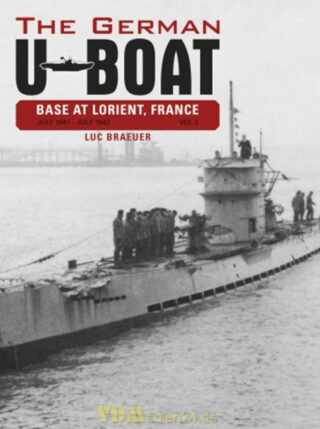 The German U-Boat Base at Lorient, France: June 1940-June 1941 Volume 1 and July 1941 -July 1942 Volume 2 (Luc Braeuer, Schiffer Publishing, Atglen, PA, 2015, 176pp each, maps, photographs, $45.00 each, hardcover)
The German U-Boat Base at Lorient, France: June 1940-June 1941 Volume 1 and July 1941 -July 1942 Volume 2 (Luc Braeuer, Schiffer Publishing, Atglen, PA, 2015, 176pp each, maps, photographs, $45.00 each, hardcover)
The Battle of the Atlantic was a submariner’s war. The German U-boat crews matched their wits, bravery, and determination against those of the Allied sailors, merchant seamen, and aviators bent on getting their ships and cargoes through despite the cost. When France fell, the Nazis gained an advantage; they were now able to position their submarines in bases on the French Coast, closer to the open Atlantic and away from the dangers of a breakout through the North Sea. Lorient was one such base. From there the Third Reich could strike at the United Kingdom’s vital shipping, hoping to bring the British to capitulation.
These two books are the first half of a four-volume set chronicling the history of the U-boat base during its first two years of operation. Included are stories of the units and personalities that sailed from the port, along with the progress of the war at sea during this period. There are extensive maps, tables, and charts to explain their progress in detail. The best feature of these books is the illustrations, over 1,100 of them between both volumes. The author’s efforts to show the Lorient U-Boat base to the minutest aspect are obvious and successful.
New and Noteworthy
The Cost of Courage (Charles Kaiser, Other Press, 2015, $26.95, hardcover) This is the story of a French family’s involvement with the resistance movement during WWII. It details their actions and the price they paid for them.
First to Jump: How the Band of Brothers Was aided by the Brave Paratroopers of Pathfinders Company (Jerome Preisler, Berkley Caliber, 2015, $16.00, softcover) This is a history of the U.S. Army Pathfinders. These soldiers jumped ahead of airborne assaults to mark the way for the main force.
Goodbye, Transylvania: A Romanian Waffen-SS Soldier in WWII (Sigmund Landau, Stackpole Books, 2015, $19.95, softcover) The author spent six years fighting the Soviets on the Eastern Front. His tale spans the length of the war and ends with the Berlin campaign.
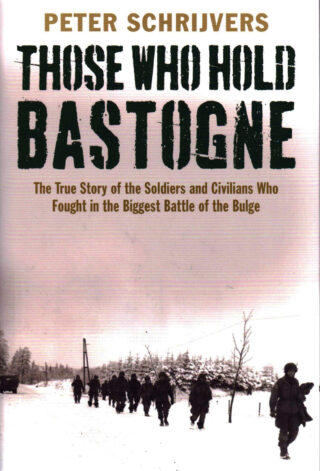 Those Who Hold Bastogne: The True Story of the Soldiers and Civilians Who Fought in the Biggest Battle of the Bulge (Peter Schijvers, Yale University Press, 2015, $28.00, hardcover) This is an in-depth look at the famous siege of Bastogne. American, Belgian, and German accounts are included.
Those Who Hold Bastogne: The True Story of the Soldiers and Civilians Who Fought in the Biggest Battle of the Bulge (Peter Schijvers, Yale University Press, 2015, $28.00, hardcover) This is an in-depth look at the famous siege of Bastogne. American, Belgian, and German accounts are included.
1944: The Second World War in Photographs (John Christopher, Campbell McCutcheon, Amberley Publishing, 2015, $22.95, softcover) This photo essay book covers each month of the year in photographs and period illustrations. Many of them have not been published previously.
1945: The Second World War in the Air in Photographs (L. Archard, Amberley Publishing, 2015, $24.50, softcover) This photo book tells another story of the war. This volume gives greater attention to the air campaigns and aircraft of the period.
The Fighting 30th Division: They Called Them Roosevelt’s SS (Martin King, David Hilborn, and Michael Collins, Casemate Publishing, 2015, $32.95, hardcover) The 30th Division was formed in the American South and went on to become one of the most highly regarded U.S. Army units in the European Theater.
Courage and Defiance: Stories of Spies, Saboteurs and Survivors in World War II Denmark (Deborah Hopkinson, Scholastic Press, 2015, $17.99, hardcover) This is a history of the resistance in Denmark written for young, school-aged readers.
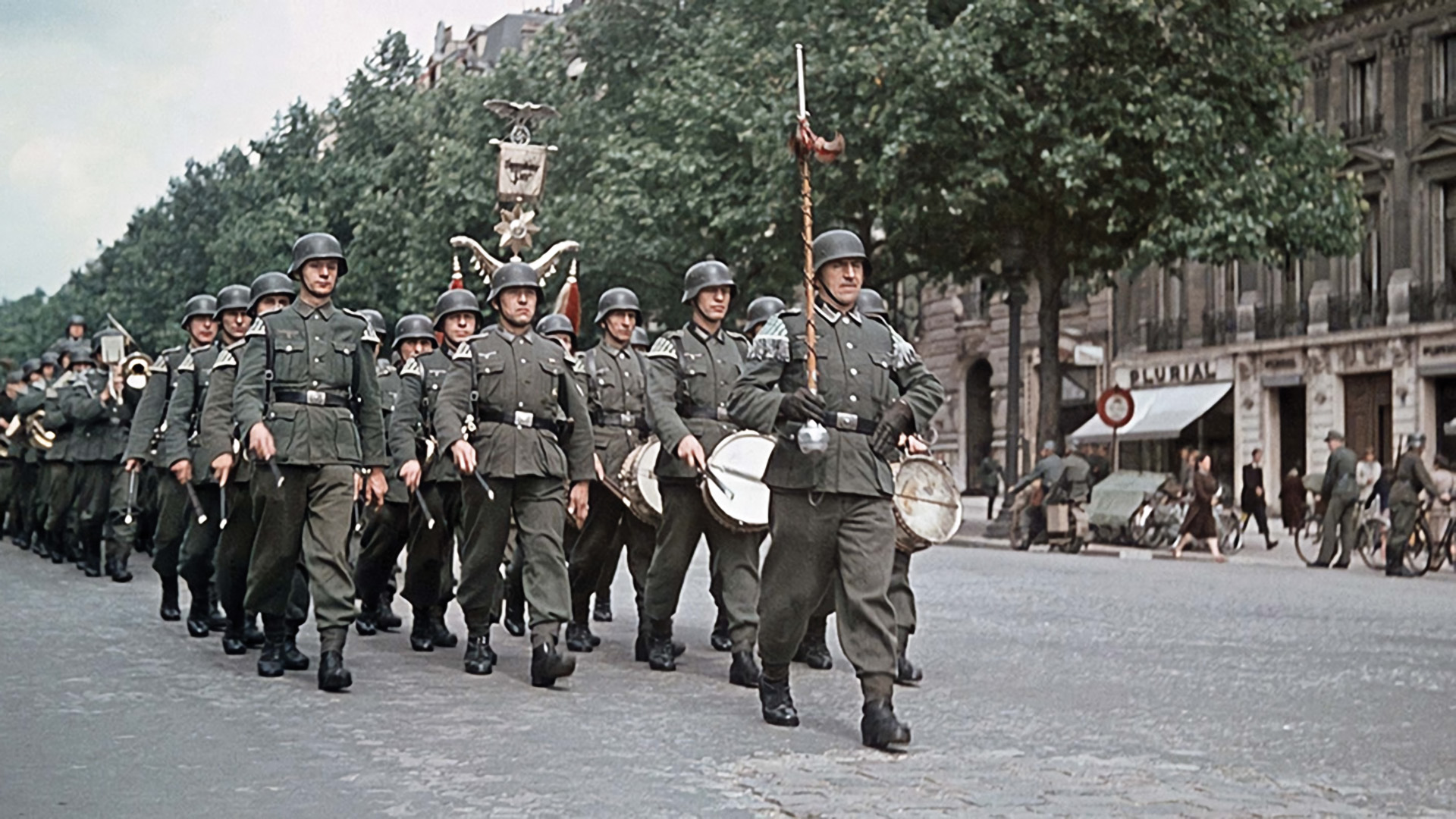
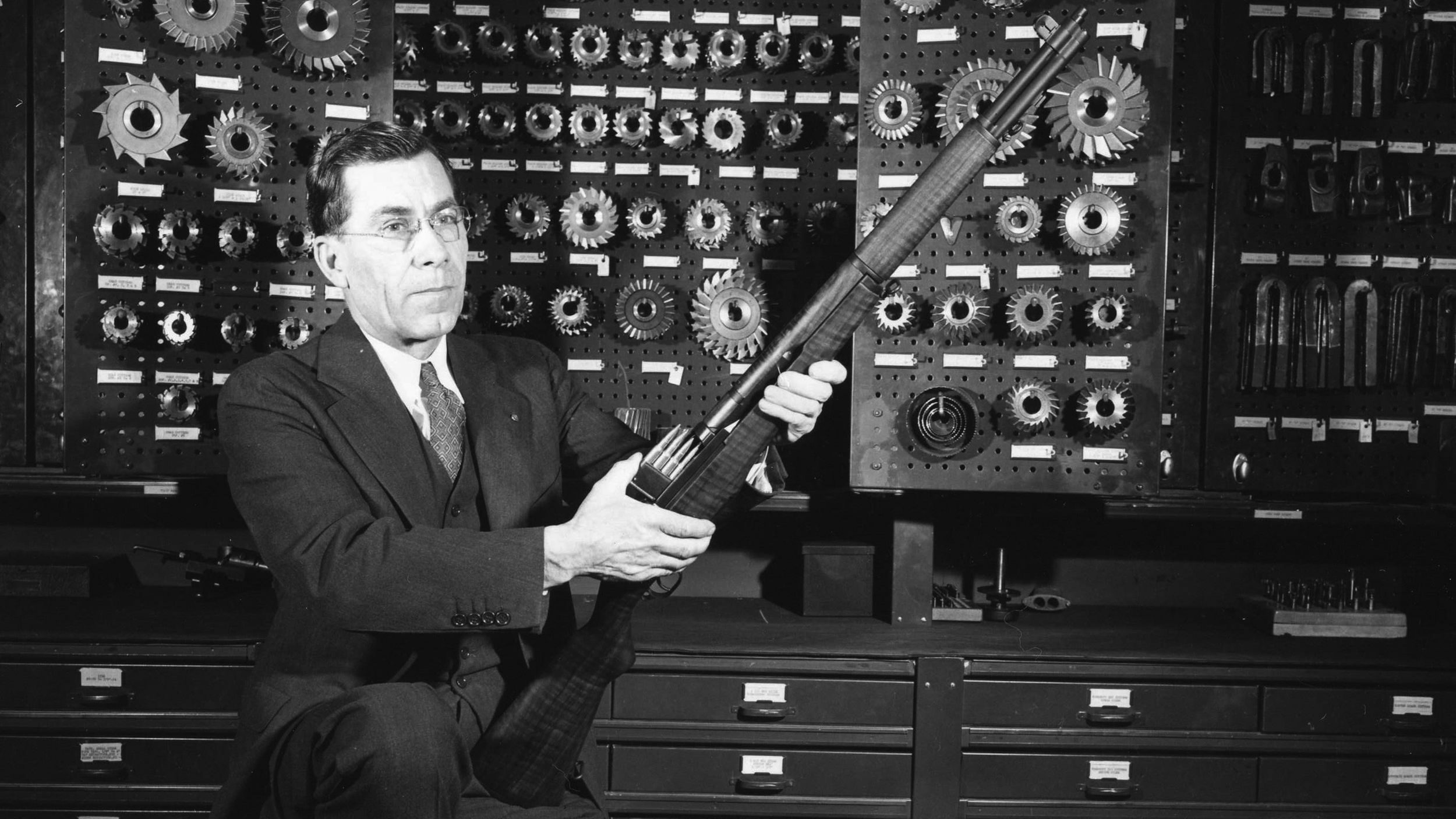
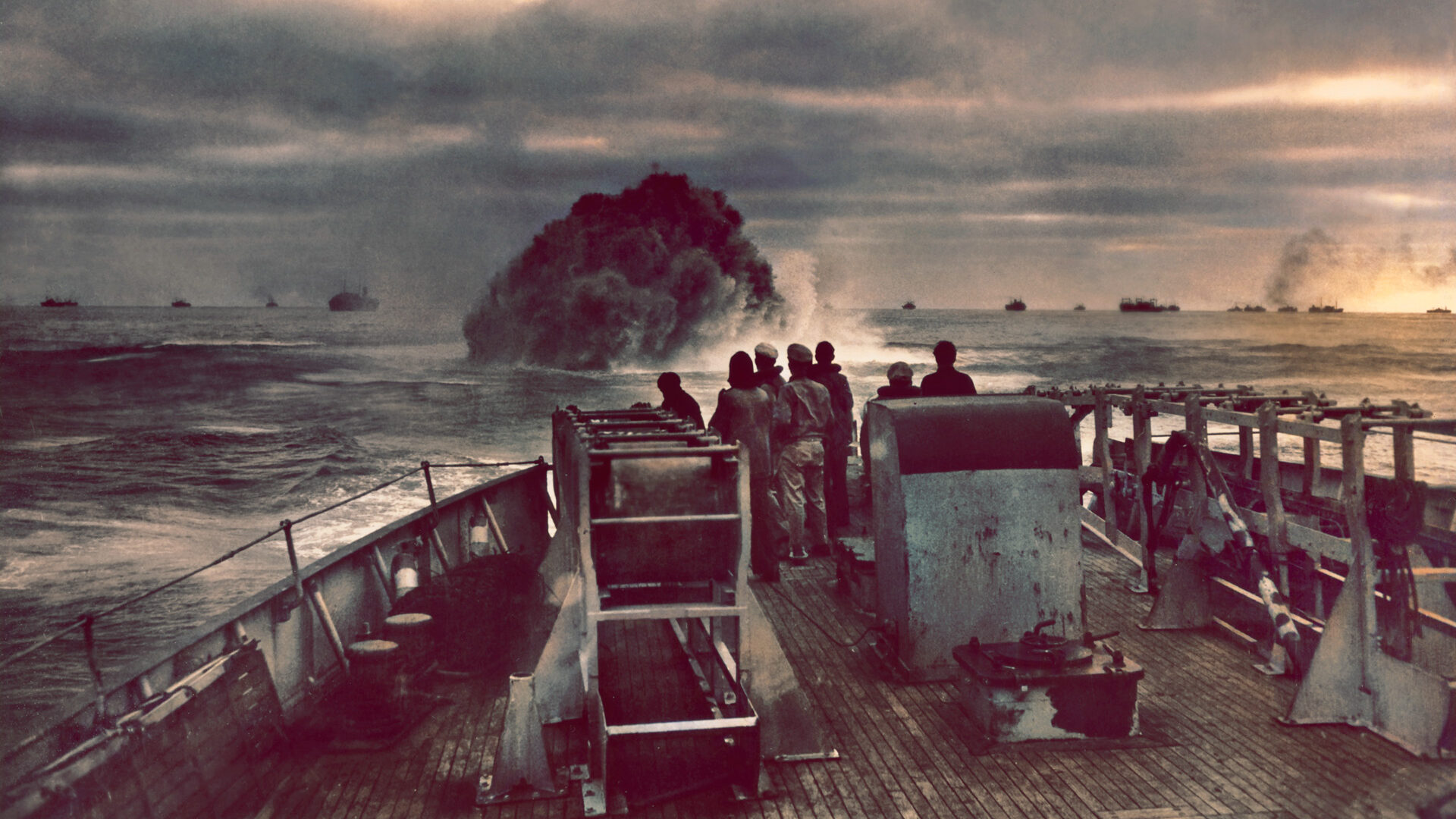
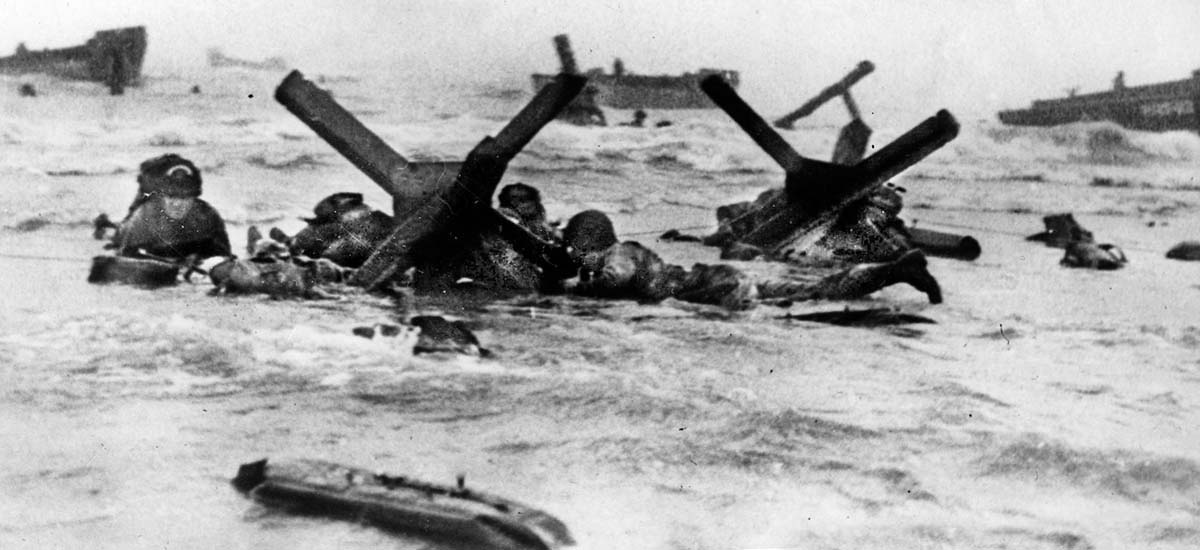
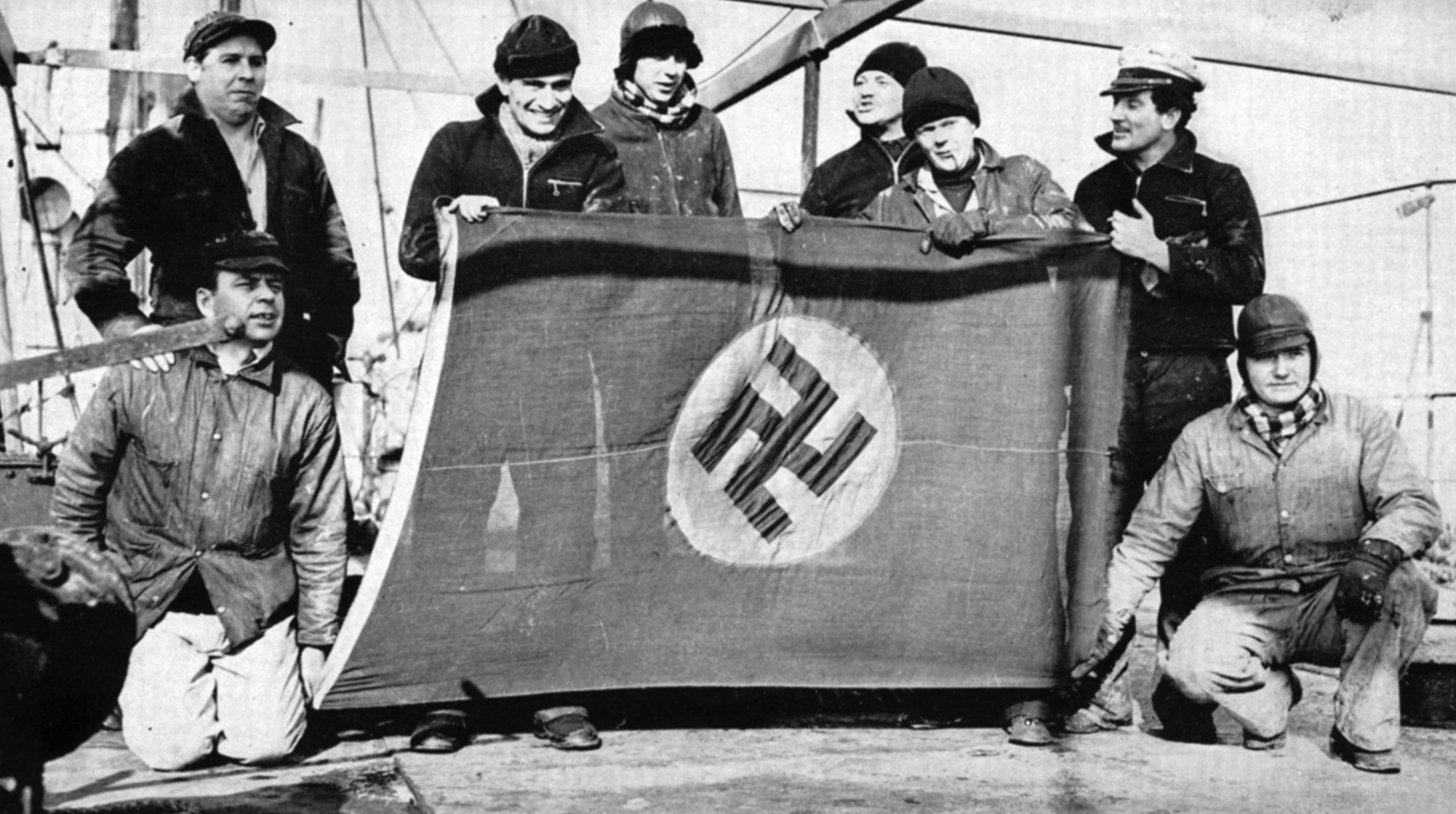
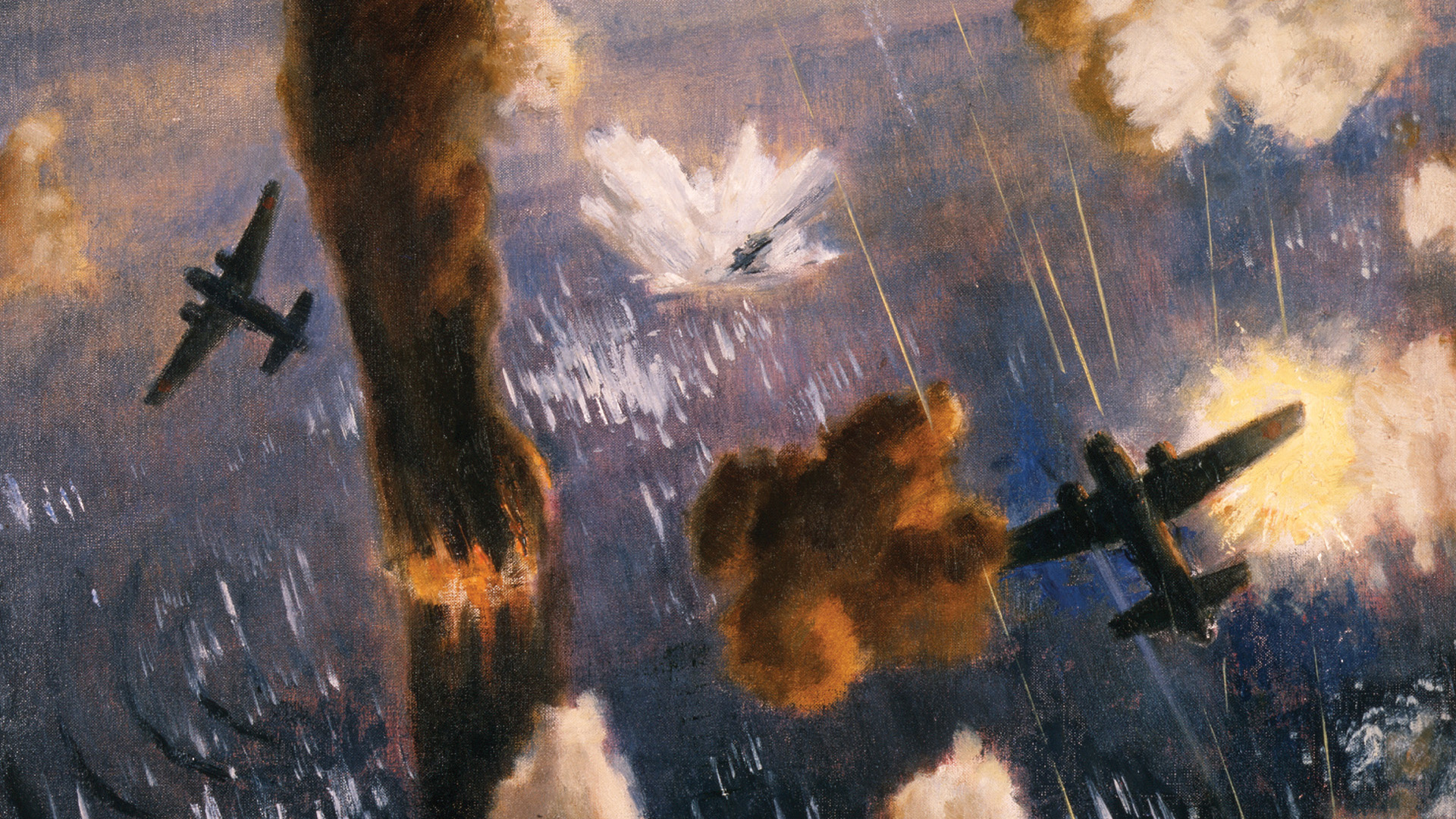
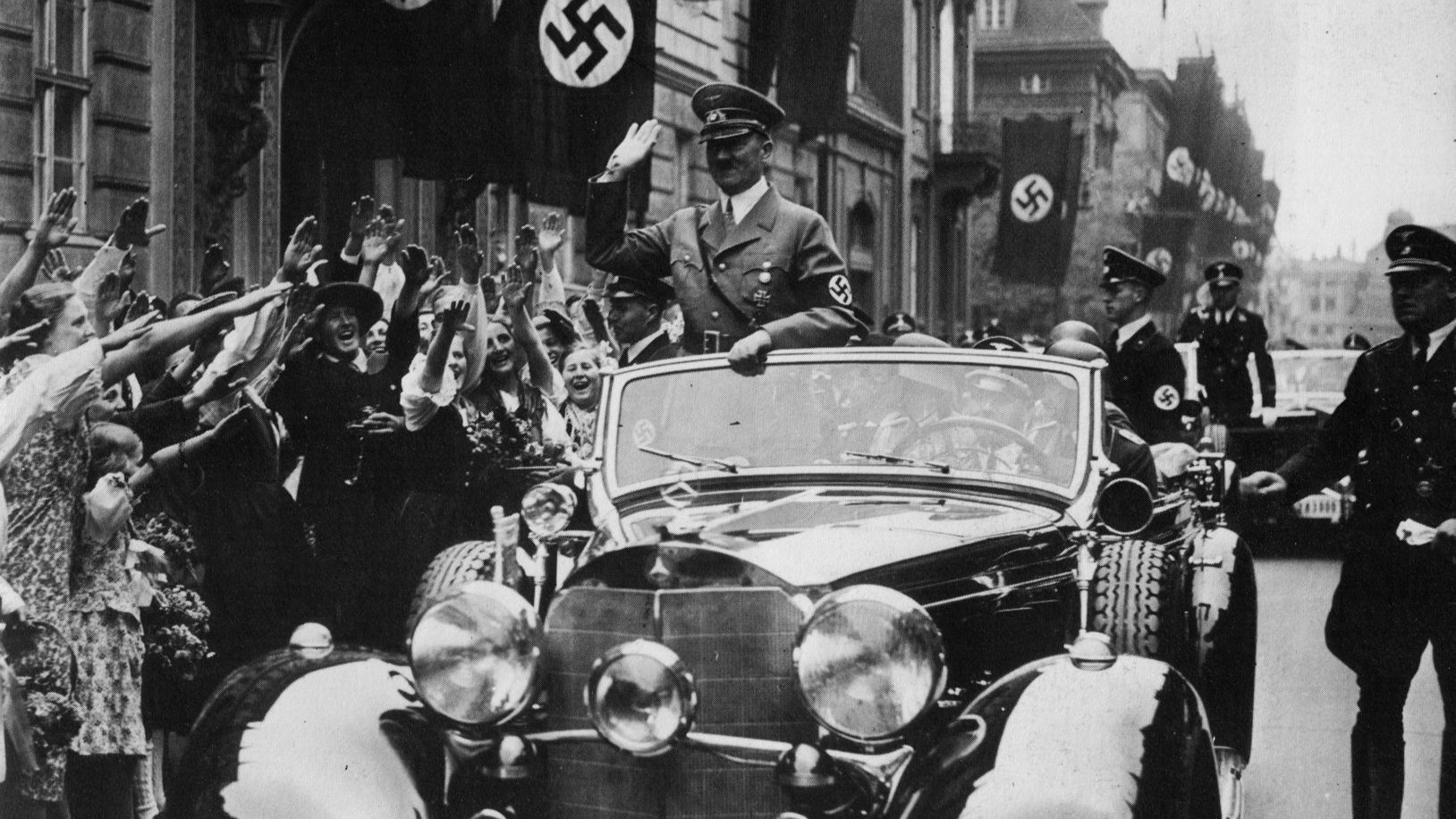
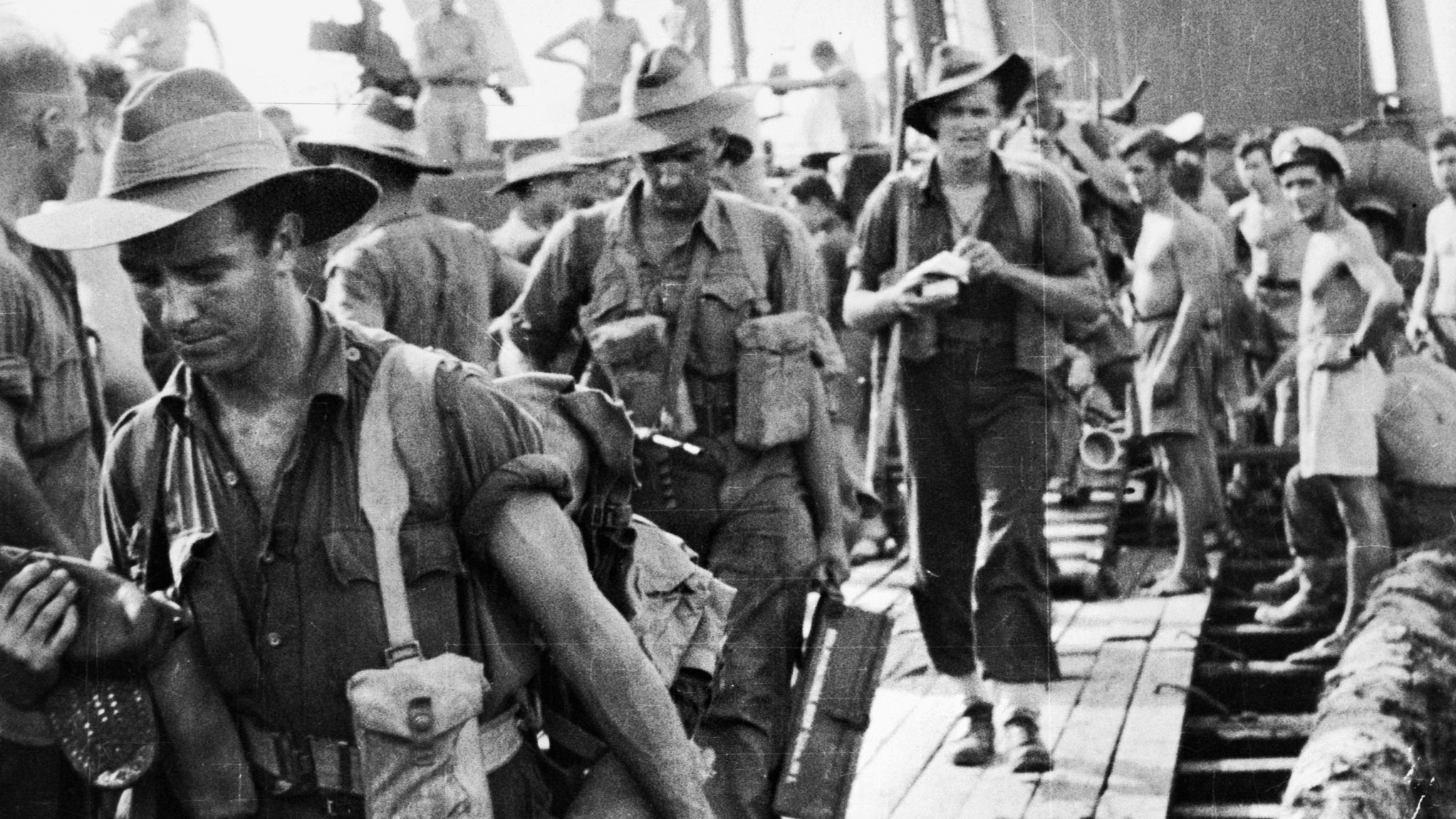
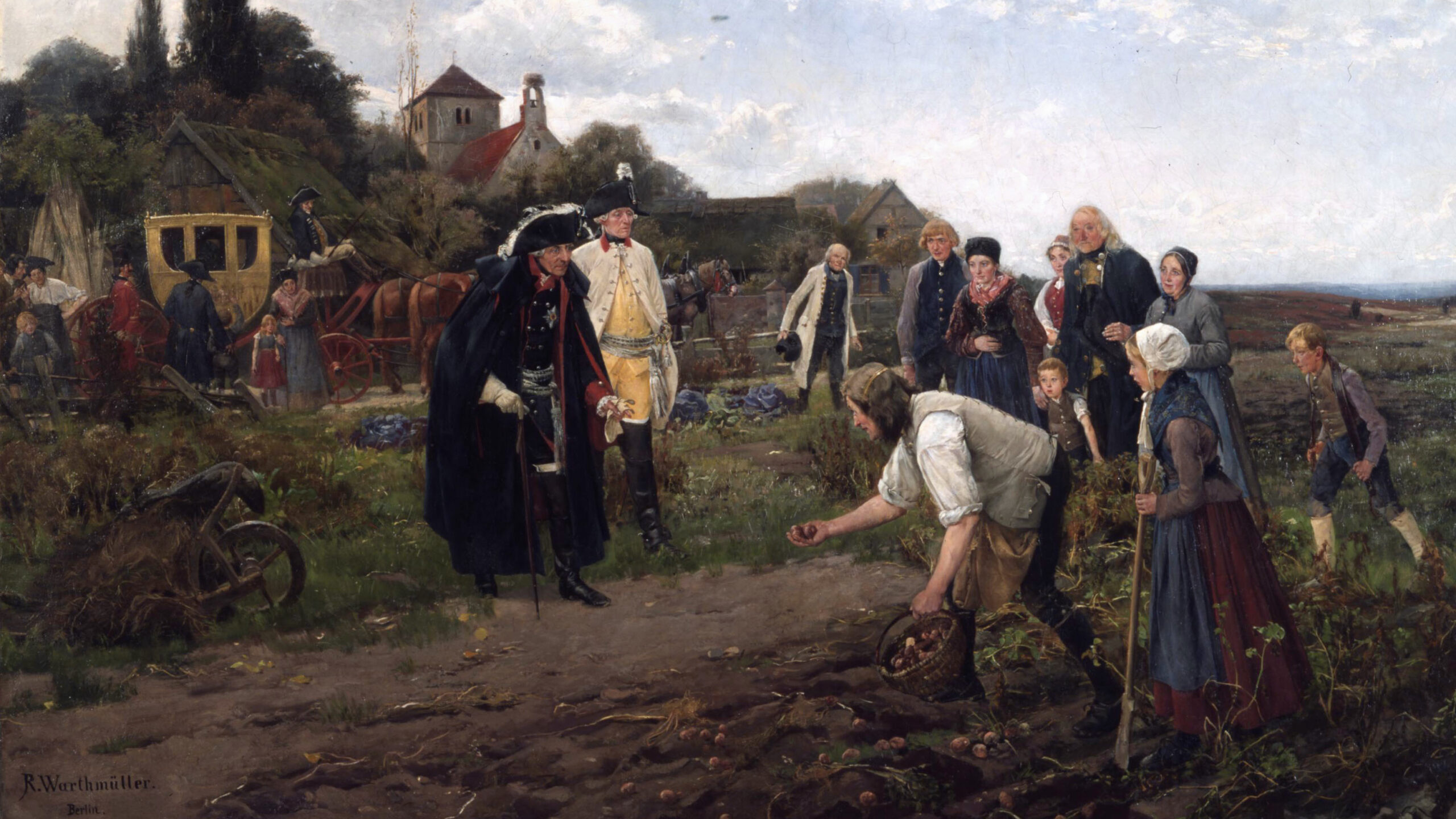
Join The Conversation
Comments
View All Comments